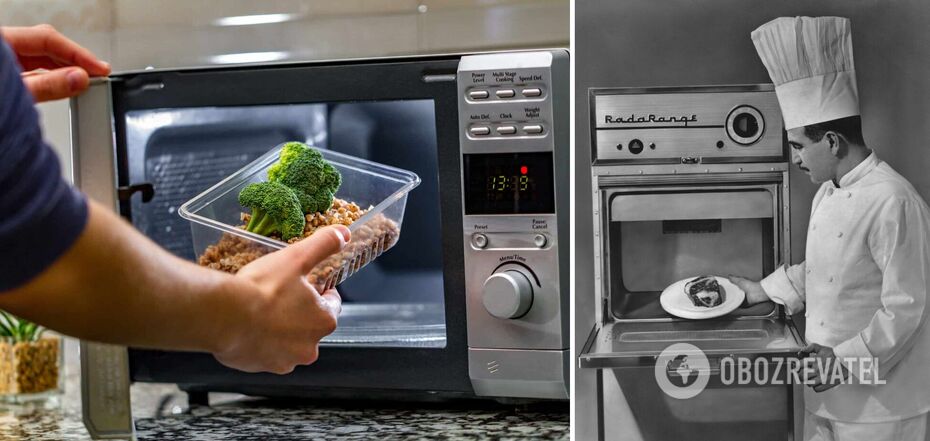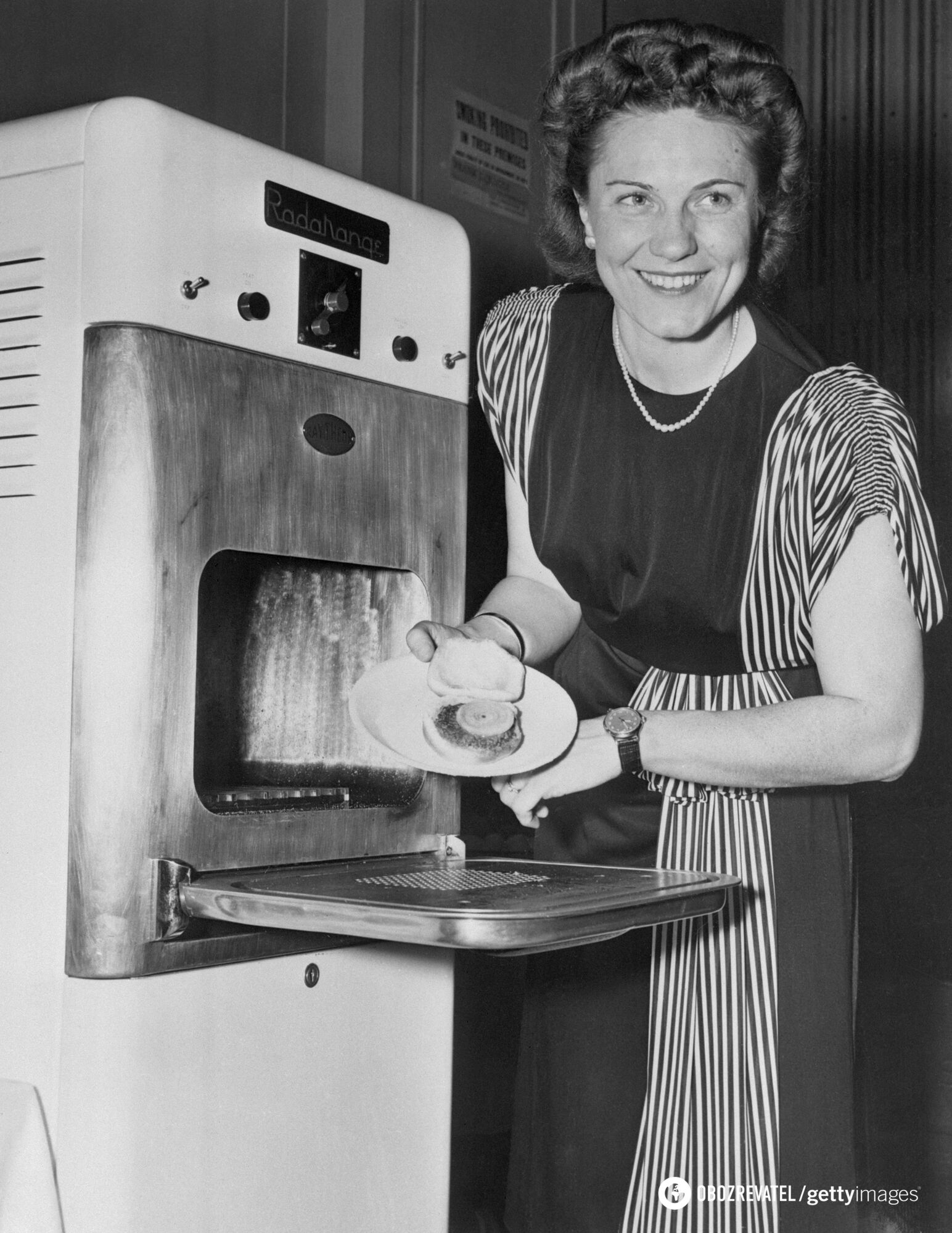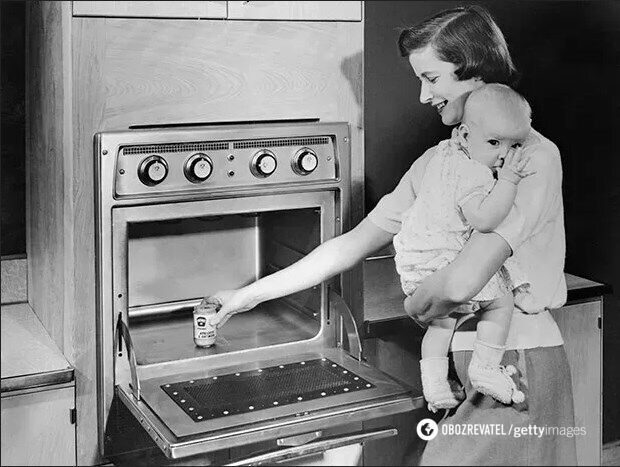Life
What the world's first microwave looked like and who (accidentally) invented it
With advances in technology and cheaper production, microwave ovens have evolved from a gadget for the privileged to a popular kitchen appliance for everyone. Reheat, defrost, bake - the microwave can do it all in minutes, while the owners enjoy life.
It's hard to believe now, but the microwave was invented quite by accident. And it happened, in particular, thanks to the end of World War II. OBOZREVATEL tells about the accidental discovery of a stubborn engineer who managed to revolutionize the kitchen.
Return to peace
The end of World War II brought some companies whose products were used for military purposes to the brink of survival. Among them was Raytheon, which produced the magnetron tubes used to generate microwaves for military short-range radars.
So the manufacturer tried to find a quick solution to its problem and come up with peaceful applications for the technology. Even then, Raytheon knew that radio waves heat dielectric (non-conductive) materials. The idea of heating such materials was already common in industry and medicine.
Bell Labs, General Electric, and RCA were also working on heating food in this way. Moreover, back in 1933, at the World's Fair in Chicago, Westinghouse demonstrated a 10-kilowatt short-wave radio transmitter that cooked steaks and potatoes between two metal plates. But it went no further than the presentation.
Give me an egg and I'll turn the world upside down
In 1946, however, Raytheon engineer Percy Spencer appeared in the magnetron story. Already 52 years old, he knew that life was never easy and that nothing was ever free. Born at the turn of the century in the backwoods of Maine, Spencer grew up in a world where food had to be hunted for and the wonders of civilization, such as automobiles or electricity, were unattainable. Despite this, he had an interest in science and managed to pursue a career in engineering.
"Grandpa was noisy, wanted things to happen all the time. There were no 'challenges,' just everything was a damn problem that needed to be solved. And he was trusted to do just that," George Rod Spencer Jr., the inventor's grandson, later recounted.
Spencer made his main discovery by accident, though not without his inherent persistence. So, in 1946, the engineer was performing regular tests with a magnetron when he felt that something strange was happening to the peanut bar in his pocket. When he reached for it with his hand, he found that the bar had turned into a sticky mess. This surprised but greatly interested Spencer.
Other lab workers also confirmed that they had noticed some items getting hot while the magnetron was running.
Spencer tried to repeat the heating test using an egg. Again he succeeded, though not as well as he would have liked, as the egg exploded right in his face. Fortunately, without consequences for the engineer.
The next day he brought a bag of corn kernels to work and used a magnetron to turn them into popcorn, which he treated everyone in the lab.
In time, Spencer came up with the idea of shielding the magnetron waves in an iron box, and that's how the idea of the microwave was born.
That same year he applied for patents on the use of microwaves for cooking, and Raytheon even managed to produce the first commercial Radarange microwave ovens. But they bore little resemblance to the devices that are now in many kitchens.
(Un)affordable technology
Radarange were massive and expensive devices that were used in restaurants or to heat food on airplanes. The first microwave ovens were more like large refrigerators, as they were almost 170 cm high and weighed more than 340 kg. The price of the gadget was also high - $5,000, or about $67,000 at the 2023 exchange rate.
In addition, these microwave ovens were built with 1.6-kilowatt magnetron tubes, which had to be constantly cooled with water.
In 1955, Raytheon began licensing its microwave technology and produced the first microwave designed for consumers. The Tappan RL-1 was built into the wall and cost $1,295 (over $14,000 in 2023), which kept it from becoming popular with regular customers.
But the company saw potential in the technology and did not give up on its desire to bring it to the market of ordinary customers. Fortunately, cheaper technology and progress made it possible to turn microwaves into popular devices.
Microwaves kill (actually, they don't)
Interestingly, Spencer, according to his grandson, did not care at all about the safety of heating food with microwaves. He saw that the technology worked, and he was satisfied with it.
"He didn't worry about it. This was a time when people wore nuclear things around their necks to get rid of cancer," Rod Spencer Jr. said.
A decade later, however, as microwave ovens became more common, there was concern about the effects of microwave radiation on humans, as the New York Times reported in 1974.
"After testing 15 microwave ovens ... Consumers Union warned in March 1973 that none of them could be considered 'completely safe,' in part because there was no reliable data on safe radiation levels," the article stated.
Even though microwave oven manufacturers demonstrated the reliability and safety of their products during a Senate Commerce Committee hearing on radiation monitoring, Consumers Union continued to stick to its position.
"We see no reason to change our opinion, but we are always open to changing it when more data becomes available," said Leonard Smiley, head of the Consumer Union's Appliance Division, urging people to refrain from using the devices.
Now everyone knows that microwave ovens do not turn food radioactive and do not affect people during their operation, but you can still find adherents of conspiracy theories on the Internet who will say that this is not true and that big companies are deliberately killing people for money.
Earlier OBOZREVATEL also told how the world's first TVs looked and who invented them.
Subscribe to OBOZREVATEL channels on Telegram and Viber to keep up with the latest events.






























